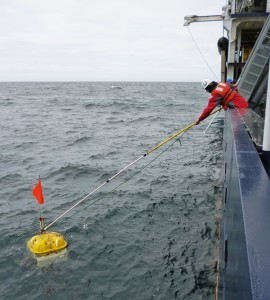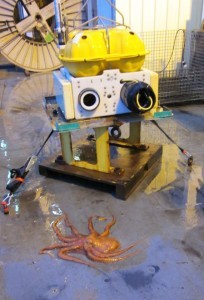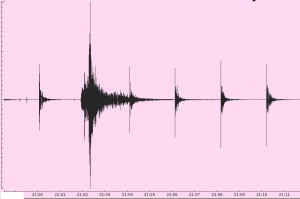To recover the OBS, we return to the place where we deployed it and communicate with it acoustically. We send it a command to release from its anchor and float back to the surface. The OBS rises through the water at 45 meters per minute, so the wait can be long if the water is deep. Some of ours were 5500 m below the surface! The instruments can also drift away from their original deployment location on the way down or the way back up due to ocean currents. When they arrive at the surface, we can spot their orange flags and strobe lights; they also send out radio signals.
Despite all the technology required to place a seismometer many miles below the ocean on the seafloor and summon it back to the surface, many aspects of actually plucking an OBS out of the ocean and pulling it on deck are remarkably low tech (yet still very impressive). Once we have spotted the OBS floating on the surface, the ship drives alongside. It is akin to driving your car up next to a ping-pong ball. People lean over the starboard side of the Langseth and attempt to attach a hook with rope to the bars on top of the OBS using a long pole. Its not always easy since the OBS is bobbing up and down in the waves. Once we hook it, we can attach a rope to the winch and haul the OBS onboard. Sometimes, OBS’s bring back surprises – an octopus returned with one of our OBS’s! He was alive and healthy, so we returned him to the sea (though some lobbied to keep him for lunch…)



